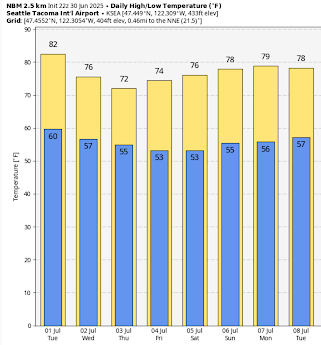Due to retirements and hiring suspensions, the number of launches of balloon-launched weather balloons (called radiosondes) has been reduced by about 10% in the U.S.
Specifically, of the 92 U.S. radiosonde locations, about ten have reduced launches either totally or partially.
Several media sources have suggested this reduction could seriously degrade U.S. weather prediction (see samples below).
But is this true? As discussed below, there are several reasons to expect that the impacts will be very small, not the least because balloon-launched weather observations now play a much, much smaller role in the modern observing network.
Why upper air data matters
The atmosphere is fully three-dimensional, and predicting the weather requires understanding the 3D distribution of temperature, wind, and humidity.
Such three-dimensional data is the starting point of the key technology of weather forecasting: numerical weather prediction (NWP), in which meteorologists simulate the evolution of the atmosphere by solving the equations describing atmospheric physics on the largest computers available.
Such forecasts start with a three-dimensional description of the atmosphere, called the initialization.
During the early years of NWP (1950-1970), radiosondes were the only source of weather information above the surface. Absolutely critical.
The number of radiosondes has declined modestly over the years, with the current global network shown below.
Lots over the U.S., Europe, and Southeast Asia. You will notice a major issue with the radiosonde distribution: there are few over the oceans and the polar regions, which encompass about 70% of the planet!
The current U.S. radiosonde network is displayed below, with red circles indicating radiosonde sites that are either suspended or only launched once per day. Keep in mind that at most sites, these observations are only made twice per day.
Is there any objective evidence that forecasts have declined with fewer U.S. radiosonde observations?
As far as I can tell, the answer is no.
I have gone through all the objective verification scores and could not find any degradation in National Weather Service forecast skill. For example, the 5-day precipitation scores over the U.S. in March 2025 are better than March 2024.
I could show you a dozen more like this.
But we have to be careful here. Perhaps 2025 was an easier year to forecast.
To do this right, we need to do OSSEs...observing system simulation experiments... in which we run identical periods we different amounts of radiosonde data.
However, there are powerful arguments about why the radiosondes are no longer as important to weather prediction, and particularly whether the temporary loss of a few of them would make much of a difference.
Today, three-dimensional satellite observations are dominant--in fact, approximately 99% of the weather data used today in numerical weather prediction is from satellites. For example, we can determine the winds by tracking features in the infrared part of the spectrum.
Or we can use satellites to measure how humidity varies with height.
Other satellites measure temperature and humidity with height by noting how GPS signals are bent by the Earth's atmosphere.
I have hardly warmed up. There are dozens of other examples of how satellites provide detailed, three-dimensional weather data over the entire planet...over most of which there are no radiosondes.
But there is more. Many aircraft take continuous observations in flight and provide vertical profiles of the atmosphere (called soundings) are they take off and land at airports (see below). Such soundings are very much like the radiosonde data, but are taken at more locations and at more times.
The bottom line of all this is that balloon-launched weather instruments (radiosondes) are now only a very, very small proportion of the atmospheric weather data used by meteorologists for weather prediction.
As a result, a loss of a few observations over a portion of one country probably has very little impact.
Thus, the headlines of gloom and doom are probably wrong.
Let me be clear....I think we should restore the U.S. radiosonde network and then complete careful experiments to determine how many of them are really needed for calibrating the satellite data and other uses. From what I have learned, restoration of the missing radiosondes will occur over the next few months, with the National Weather Service now hiring again.


















